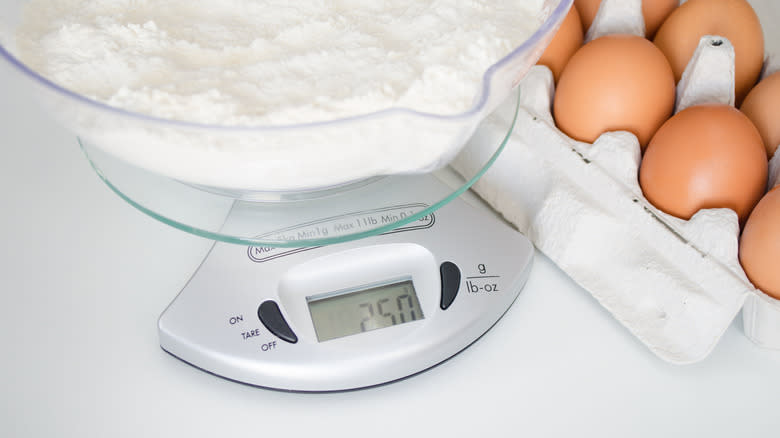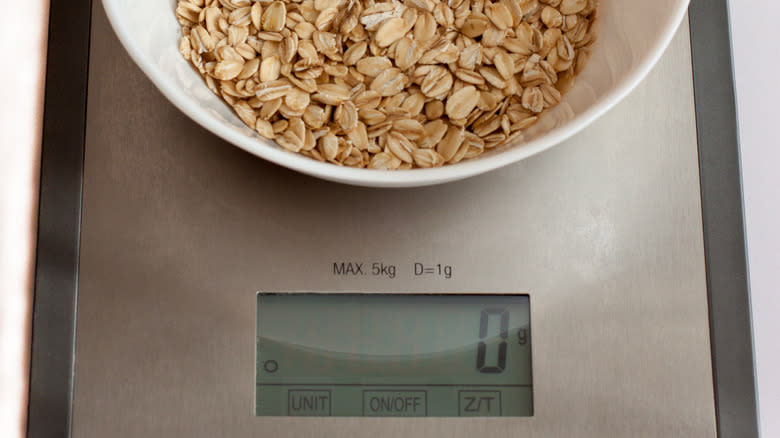The Benefit Of The Reverse Tare Method When Weighing Ingredients

Serious bakers are serious about measuring ingredients. A bit too much flour can result in dry, crumbly cookies, and not enough makes an overly gooey, flat one -- just two of the many downfalls of poor measuring. Using a scale to weigh out ingredients is the most accurate method and, once you get used to it, the most convenient. You'll save time not washing all the measuring utensils and eliminate worries about improperly packed brown sugar or inaccurate measuring cups.
Your scale can do a few tricks to help make your measuring even more efficient. One, the so-called reverse tare (or negative tare) method, allows you to remove exactly the right amount of an ingredient from your storage container. You just place the container on the scale, press the tare (or zero) button to zero out the reading, and scoop out what you need until the reading shows the negative weight called for in your recipe. So if you're looking for 8 ounces of flour, the reading will show -8 ounces when you've taken out the right amount. Measuring directly from the container saves washing a bunch of mise en place bowls and allows you to spoon dry ingredients gradually into your mixing bowl without removing it from your stand mixer with each addition called for in your recipe.
Read more: 30 Types Of Cake, Explained
Zeroing Your Scale For More Efficient Weighing

If you've never used the tare button on your scale, you can think of it as the reset button -- it resets the reading to zero, regardless of what is on the scale at the time. Some bakers use the setting to weigh a series of ingredients into a mixing bowl on the scale, but the reverse tare method measures the weight removed from the scale. By using the reverse tare setting, you can simply spoon each ingredient in the right order into the mixture and leave the stand-mixer bowl in place. Reverse taring your container also overcomes the problem of reading your scale when the mixing bowl is too wide to see the display easily or if you need to weigh ingredients into a simmering pan on the stove. Just rely on the negative tare weight from your container.
You'll also save a lot of washing up by using the reverse tare method to weigh out messy ingredients like peanut butter or shortening. Place the jar or can on your scale, press tare, and scoop out the needed weight right into your mixing bowl, until the display shows minus the correct weight. Weighing your ingredients like a chef is one more step to being more efficient in the kitchen so you can spend less time cleaning and more time enjoying what you cook.
Read the original article on Tasting Table.

